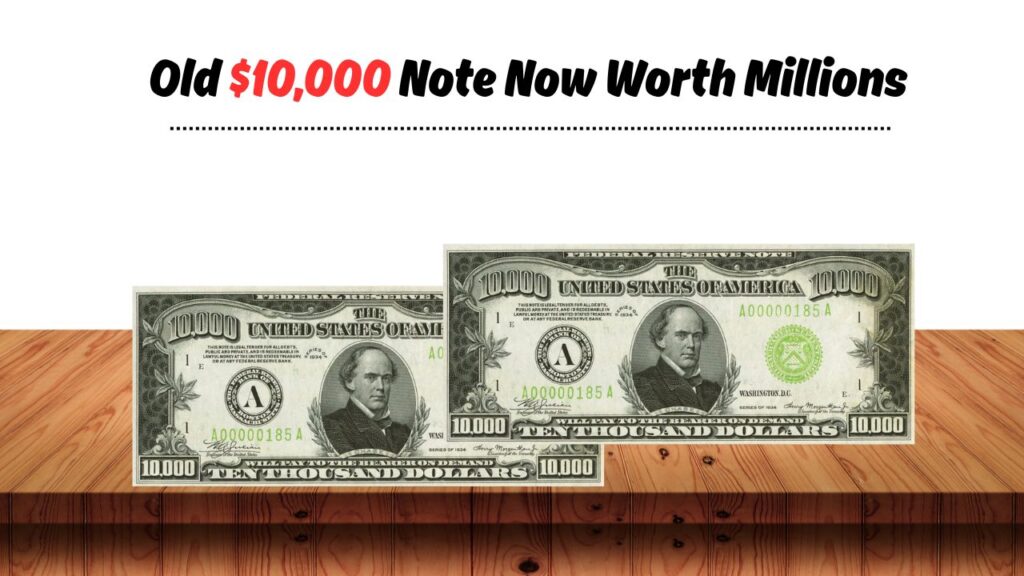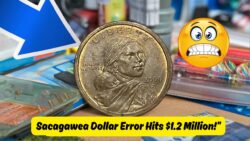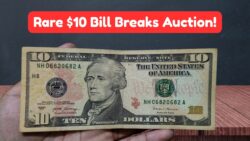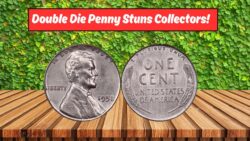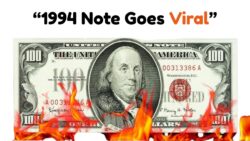Rare $1000 Note – In an extraordinary discovery that has stunned collectors and history buffs alike, a rare $10,000 note from the Great Depression era has resurfaced — and it’s now valued in the millions. This ultra-high denomination currency, once used exclusively for large banking transactions, is not only a symbol of American financial history but also a prized asset in the numismatic world. Let’s dive into what makes this note so special, how it was used, and why its value has skyrocketed.
What Is the $10,000 Note?
The $10,000 bill is one of the highest-denomination notes ever issued by the U.S. Treasury. It was part of the 1934 series and featured a portrait of Salmon P. Chase, who served as the U.S. Treasury Secretary under President Abraham Lincoln and later became Chief Justice of the Supreme Court.
Key Features:
- Portrait: Salmon P. Chase
- Series: 1934
- Use Case: Interbank transfers (not public circulation)
- Denomination: $10,000
- Color: Green seal and serial numbers, typical of Federal Reserve Notes
These notes were never meant for public use. Instead, they facilitated large financial transactions between Federal Reserve Banks, particularly before the days of digital banking.
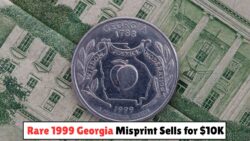 This 1999 Georgia Quarter With Misprint Just Hit $10,000 at Auction – Still in Circulation!
This 1999 Georgia Quarter With Misprint Just Hit $10,000 at Auction – Still in Circulation!
How Did It Resurface?
This particular $10,000 note was discovered during the estate cleanout of a retired banker in New York. The note was found tucked safely in a sealed envelope inside an old filing cabinet, wrapped in a piece of wax paper for preservation. It’s believed the note was kept as a souvenir or memento — something that was technically illegal, as all $10,000 notes were ordered to be destroyed in the 1960s.
The family of the deceased brought the note to an appraiser, who confirmed its authenticity and estimated its current market value at well over $1.5 million, depending on condition and serial number.
Why Is It Worth So Much?
There are several reasons why this note has appreciated dramatically in value:
1. Scarcity
Only 336 $10,000 notes are known to exist today, most of which are held in museums or Federal Reserve vaults. Publicly owned pieces are exceptionally rare.
2. Historical Significance
The note comes from the height of the Great Depression, a time of immense economic turmoil. Anything tied to that period, especially of this magnitude, holds deep historical value.
3. Illegality and Survival
Because these notes were never meant to be in public hands, and most were destroyed, finding one in private possession is astonishing.
4. Collector Demand
High-denomination notes are a niche area of numismatics. Wealthy collectors are always on the lookout for rare bills to complete their collections, often sparking bidding wars.
Auction Potential and Market Buzz
Auction houses are already lining up to handle the sale. Experts predict the note could fetch upwards of $2 million depending on the venue and publicity. Previous auctions for similar notes have seen prices between $500,000 and $1.2 million, but given the current buzz and pristine condition of this discovery, the ceiling could be much higher.
Notable Past Sales:
| Year | Sale Price | Condition | Auction House |
|---|---|---|---|
| 2006 | $690,000 | Fine | Heritage Auctions |
| 2013 | $1.1M | Very Fine | Stack’s Bowers |
| 2020 | $1.6M | Uncirculated | Private Transaction |
Can You Own One Legally?
Yes — surprisingly. While owning a $10,000 note was once considered illegal, the U.S. government now allows collectors to legally buy and sell them, as long as they weren’t stolen or illegally obtained from the Federal Reserve.
Legal Ownership Checklist:
- Note must be declassified or officially released
- Not acquired through theft or fraud
- Proper documentation required for resale
If you think you might have a similar note in your attic or family collection, it’s worth getting it appraised by a certified currency expert.
How to Identify a Real $10,000 Note
Here are a few identifiers to spot an authentic 1934 $10,000 bill:
- Salmon P. Chase portrait at center
- Federal Reserve Seal and unique serial number
- “Ten Thousand Dollars” printed in large font on front and back
- 1934 Series marking on front
- Green Treasury Seal (not blue or red)
Collectors advise against handling these notes with bare hands. Even fingerprints or light moisture can damage them and drastically reduce value.
Why the Fascination with High-Denomination Notes?
Besides their rarity and value, these notes are historical time capsules. They symbolize a time when the U.S. economy was trying to recover from collapse, and interbank paper currency had to move millions at a time.
In today’s digital world, the idea of a paper note being worth $10,000 — let alone millions in collector value — seems surreal. But that’s exactly what makes these pieces of history so irresistible.
The unexpected rediscovery of a $10,000 note from the Great Depression is not just a collector’s dream — it’s a powerful reminder of America’s financial evolution. From war bonds to digital banking, the journey of money tells the story of the country itself. And in this case, one very rare bill is telling it loud and clear — in millions.
FAQs
Q1. Who was featured on the $10,000 bill?
A1. Salmon P. Chase, former U.S. Treasury Secretary and Chief Justice.
Q2. Can you still use a $10,000 bill today?
A2. Technically, yes — but they are now collector’s items, not in public circulation.
Q3. How many $10,000 bills exist?
A3. Only 336 are known to exist today.
Q4. What was the original purpose of the $10,000 note?
A4. It was used for bank-to-bank transfers during the Great Depression.
Q5. What’s the current estimated value of a $10,000 note?
A5. It can be worth between $500,000 to over $2 million depending on condition and rarity.

